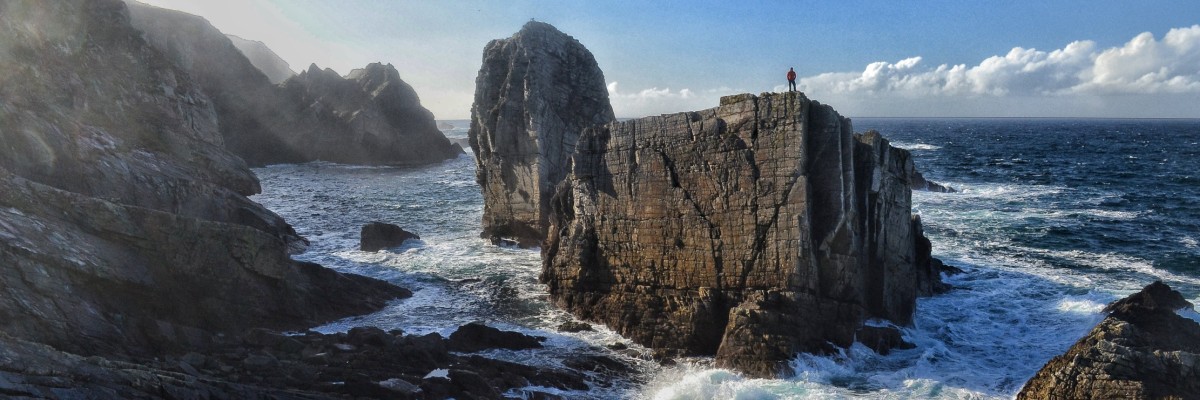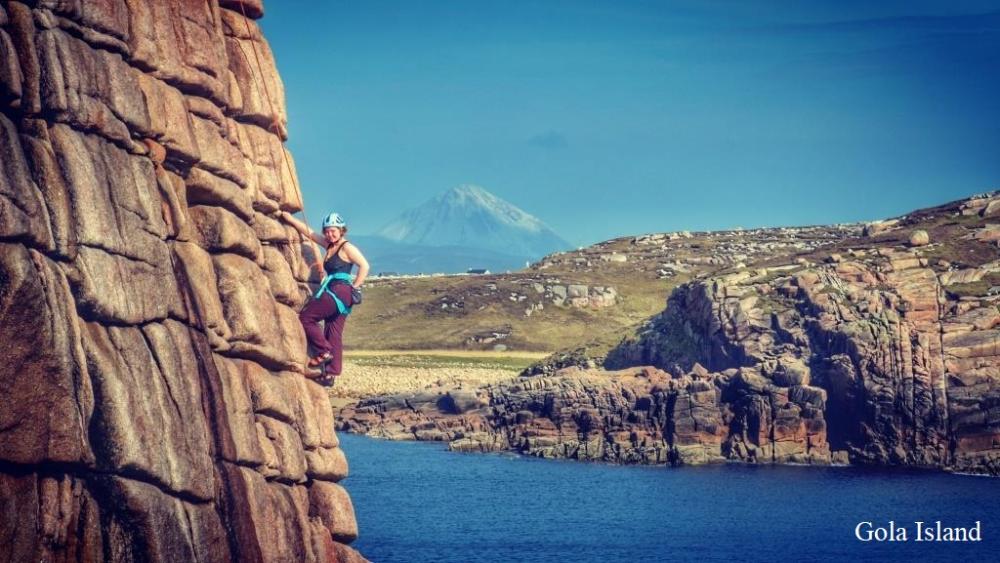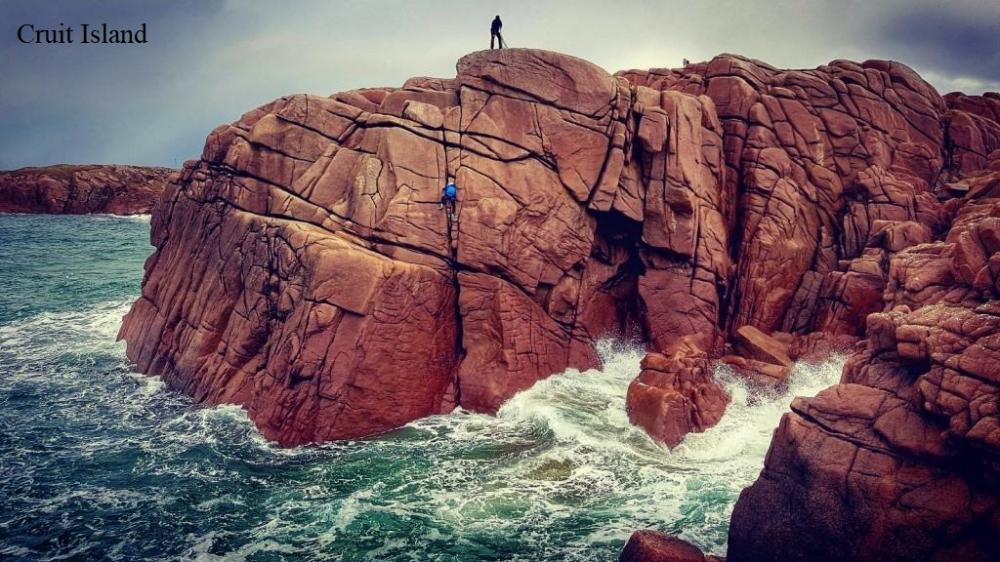The Wild Atlantic Way is one of the longest defined coastal driving routes in the world. Running for 2500 kilometres along the west coast of Ireland from Malin Head in the north to Mizen Head in the south. This outstanding route passes through nine counties and three provinces as it winds its way along the rugged and untamed west coast of Ireland.

The county of Donegal at the northern end of the Wild Atlantic Way is quite simply a rock climbers paradise. With over 1000km of coastline, 30 uninhabited islands, 100 sea stacks, over 3000 recorded rock climbs and two major Irish mountain ranges. It is easy to see why Donegal is the rock climbing capital of both Ireland and of course, the Wild Atlantic Way. For more information on what is climbing is currently available use the google map in the On-Line Guide to download your chosen free mini-guidebook PDF to that area of the county. For a more general overview of the rock climbing in Donegal there is a paper guidebook containing a select 1000 climbs, Donegal Rockclimbing Guidebook_2015

Living just off the coast of Donegal is the largest collection of climbed sea stacks in such a small geographic area, on earth. In total there are well over 100 stacks in Donegal's coastal waters with around 50 of them, of technical interest to recreational rock climbers. These include Tormore Island, Ireland's highest sea stack and Cnoc na Mara, the best sea stack rock climb on this planet. The best, most adventurous and perhaps the most foolish of these nautical summits live in some of the most atmospheric coastal locations in Ireland. The full free sea stack guidebook to the county is a HERE. An ascent of any of Donegal's sea stacks will live for a very long time in your happy memories.

Hidden away below the signal tower beside the mighty Slieve League sea cliffs on Donegal's south coast, is one of Ireland's original climbing locations. This impressive 80-metre high Dolerite slab was first climbed in 1967 by the legendary English climber/mountaineer Doug Scott. Download the Sail Rock climbers guidebook HERE. The base of Sail Rock acts a huge catchment feature and is prone to huge swells from both the South and South-West directions. if the base of the face is taking green there are alternative climbing locations to both the East and West of Sail Rock at Glencolmcille, Malin Beg and Muckross Head.
Gola Island is easily a contender for the best rock climbing location in Ireland. What Gola Island provides is an outstanding rock-climbing location in a wild, remote and truly beautiful setting. The island sits far out in County Donegal's rainshadow and it is not unusual to be climbing on the island in bright sunshine and blue skies whilst the rest of the county is under a deluge of constant heavy rain. The island has over 200 recorded climbs on the absolutely immaculate sea-washed granite sea cliffs. Have a look at the free guidebook to Gola Island
The Rosses in Western Donegal is an outstandingly beautiful area of bare granite landscape and a golden sandy beaches. The islands found off western Donegal are a step back in time and provide many lifetimes of world-class rock climbing, have a look through the Island's Guide pages. The golden granite sea cliffs found on Cruit Island will fill many of your summers with over 400 routes on 20+ crags around the Island. The entire coast of the island is dotted with short compact sea cliffs and each one has a complimentary tropical sandy beach within a few minutes walk. Download the free Cruit Island Guidebook.
At Unique Ascent we can take you to the most adventurous and atmospheric locations in Ireland, from the summit of Tormore Island to the centre of The Table sea stack below Slieve League. These adventurous days out will take you way beyond anything else commercially available in Ireland. These are days out you will never forget for all the right reasons.
If this all seems a wee bit too much, we specialise in providing you and your family on outstanding adventures in places very rarely visited.